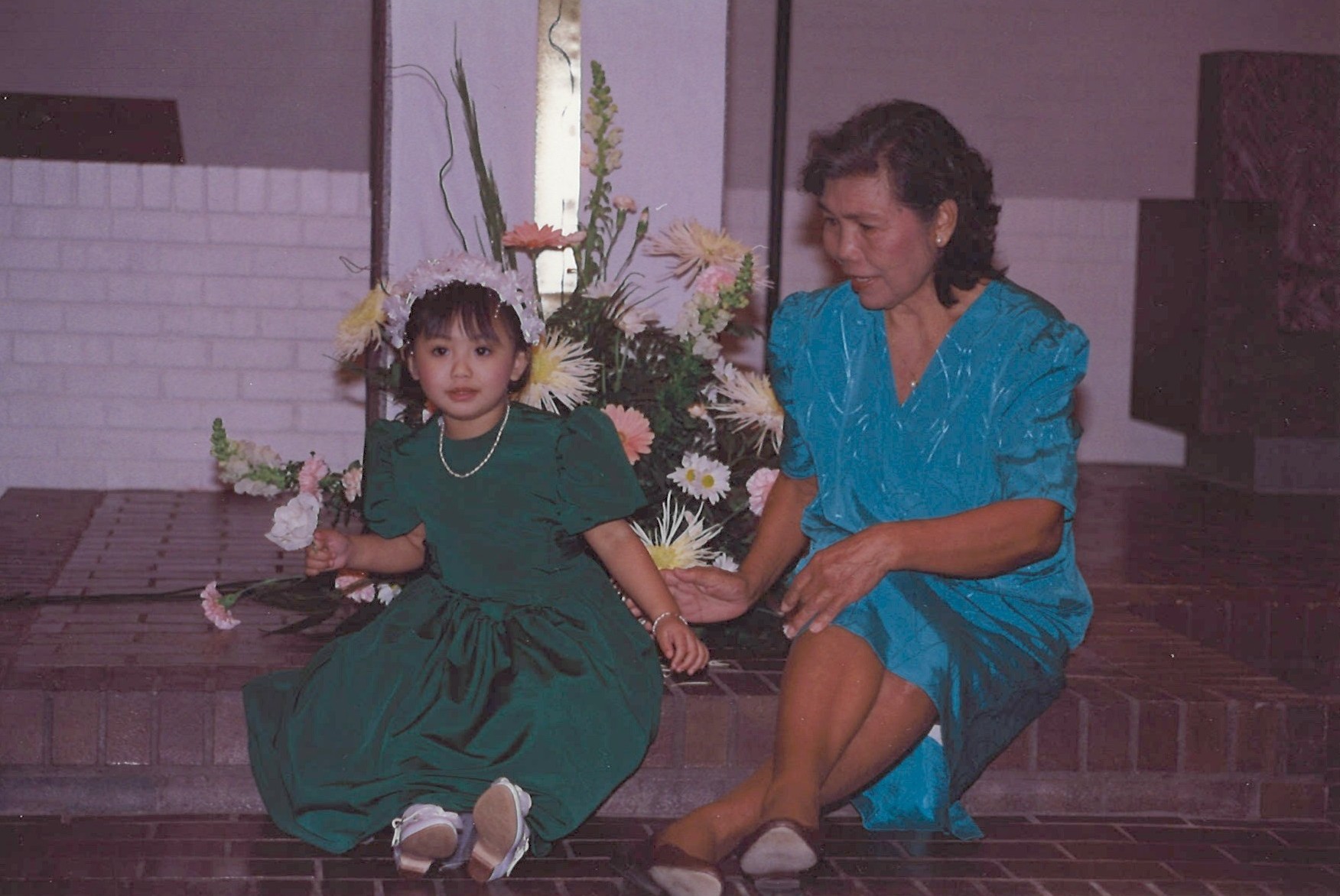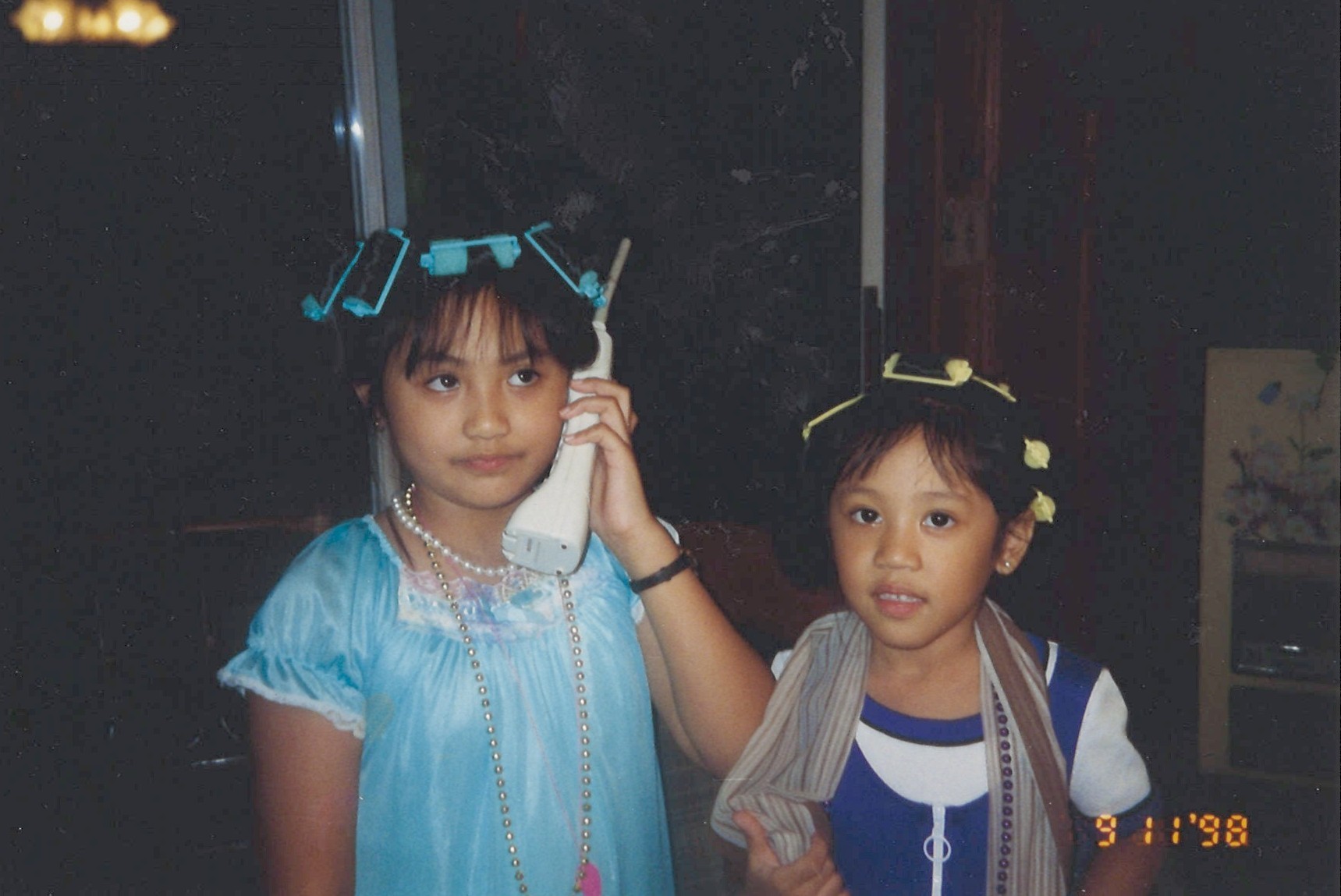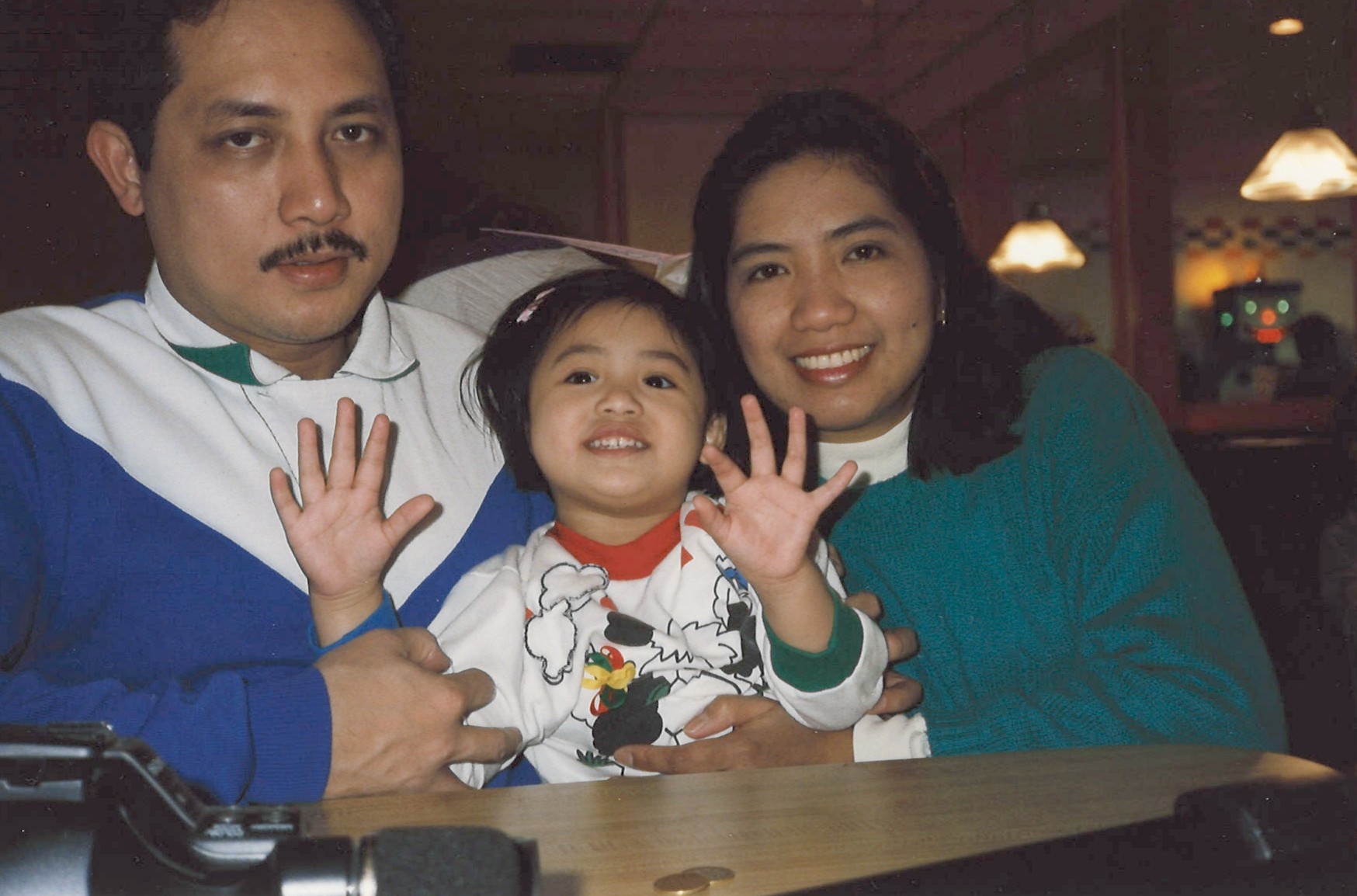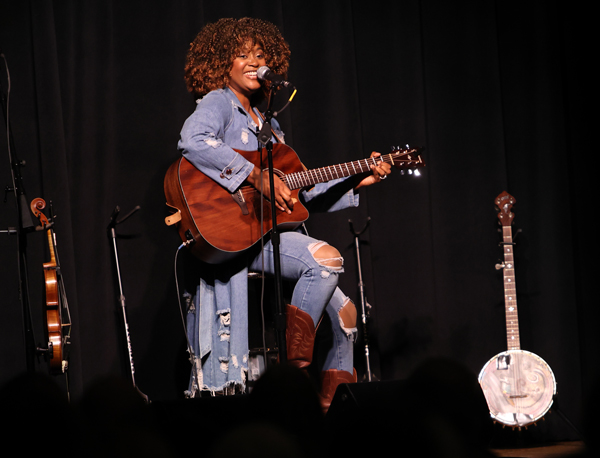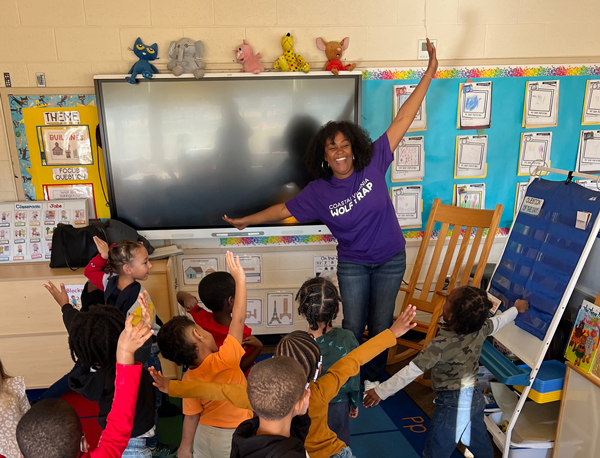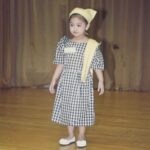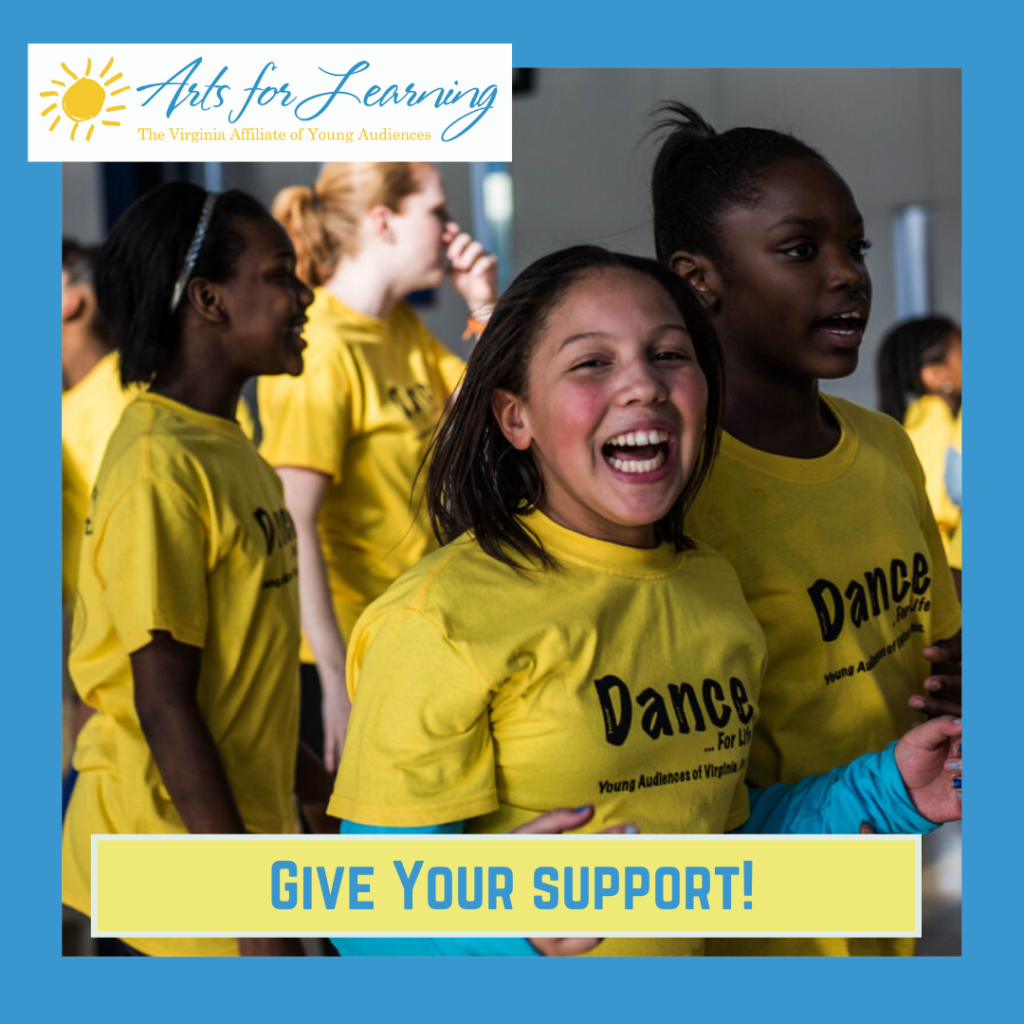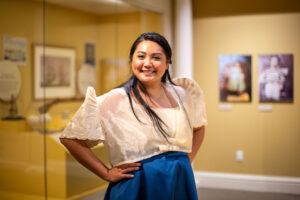 My name is Jackie Adonis, and I’ve been a Teaching Artist with Arts for Learning Virginia for the past three years, sharing my passion for Filipino dance and theater throughout Virginia. Whether my time with my students is brief, such as for a workshop, or longer, such as for a residency, I see the impact we have on future generations in real time, and that’s both meaningful and humbling.
My name is Jackie Adonis, and I’ve been a Teaching Artist with Arts for Learning Virginia for the past three years, sharing my passion for Filipino dance and theater throughout Virginia. Whether my time with my students is brief, such as for a workshop, or longer, such as for a residency, I see the impact we have on future generations in real time, and that’s both meaningful and humbling.
It all started with an audition I wasn’t even supposed to do. For two years, I’d worked as a House Manager for the Zeiders American Dream Theater. During the first year of the Z’s Common Casting Call, performing artists auditioned for various arts organizations in the area, including the Virginia Stage Company, Virginia Musical Theatre, Virginia Beach Cultural Affairs, and Arts for Learning Virginia. As House Manager, I welcomed each auditionee as they arrived.
The day began swiftly and smoothly…and then, there was a lull. I tried to mask my ADHD and sit still. Then, I noticed members of the different organizations walking around, also restless as they waited for the next wave of auditionees. Finally, as I was about to burst, I asked the Z’s Executive Director, Terry Flint, if I could audition while we were waiting. Conveniently, I had my headshot, resume, and sheet music in my bag and a monologue in my metaphorical back pocket. Terry said yes.
It wasn’t the ideal audition situation. I was dehydrated, I hadn’t warmed up my voice, and I hadn’t brought a change of clothes, so I was wearing my House Manager uniform and a sweaty ponytail. All I had to show the most prestigious performing arts organizations in Hampton Roads was myself.
At that point in my life, I was unsure of what I was doing. The global pandemic deferred my dreams of going to New York City after graduating from acting school. The way that COVID-19 pulled the rug from underneath all of us had me questioning what my purpose in life was—or if there was a purpose at all. I had no idea that day at the Z would change my life.
I sang “Days” from Fun Home. I performed a monologue from Goodbye, Charles. I did some cold reads and improv. Then, I thanked everyone for giving me a break from work and returned to my welcome table at the front entrance.
The end of my shift involved tidying up the restrooms—glamorous, I know. I wiped the sweat off my forehead, and when I got out of the final bathroom, Arts for Learning’s Programs and Community Engagement Manager, Aisha Noel, was waiting for me with her business card. “I want to build a program with you,” she said. “We need more artists like you.” I knew nothing about teaching or building a program. I didn’t even know this person. However, I did know how I felt, and I felt seen.
I called Aisha later, on a weekday. She set me up with Drew Lusher, A4L-VA’s former Artist and Programming Manager, who helped me build my first Arts for Learning program, which centered on a dance I’d done since I was a child: the Itik Itik (loosely translated, the Dance of the Duck).

I learned the Itik Itik at age two when I lived in Roanoke. My parents and their friends were part of the Philippine-American Association there. This group put together programs to showcase the songs and dances of our culture, and members and their families were invited to perform in these showcases. Even though I was “voluntold” to be on stage, I was delighted to do so because I already felt I belonged there.
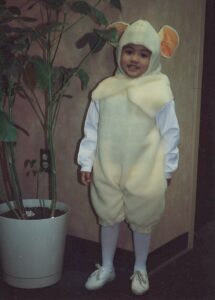
I had no idea that decades later I’d be asked to share this dance with hundreds of kids all over Virginia. After speaking with Aisha and Drew, I cried happy tears at the prospect of sharing my culture, something that was difficult growing up in Roanoke. My classmates made fun of me for bringing food from home, saying it smelled bad. In kindergarten, I was put in timeout for not speaking English in class. I could speak English well—it was just that no one told me that I had to speak English outside the home. I was only five years old. How was I supposed to know? I thought everyone could speak Tagalog, so when I asked for tubig (water), my teacher called my mom and said I was saying “bad words in class.” My mom definitely shared some words with her.
After that incident, my parents only spoke to me in English to prevent me from getting confused. Over time, I forgot how to speak my language. I felt only the remnants of rolled r’s on the tip of my tongue. I stopped bringing food to school and started eating the terrible cafeteria food. I learned how to be less of my culture, less of myself.
Fast forward decades later, and Arts for Learning was asking me to share my culture. I was reassured that being myself—fully myself—was welcome. This reignited a flame within me, and with each workshop I did, that flame spread. Whenever children told me they were Filipino too, I was happy that they felt seen and represented in a way I wasn’t when I was their age. It was also heartwarming to see my non-Filipino students embrace a culture that was different from their own. It meant so much to see them bright-eyed with curiosity to learn more.
I was already content to serve our communities in this way, but then Arts for Learning gave me another opportunity: the IDEAL program. IDEAL stands for Intentional Designs of Expression in Artistic Languages. Our goal was to help fourth to sixth grade students prepare for middle school by using various art forms to explore questions such as, “Who am I?” and “How am I a part of my community?” This residency lasted for three years, with each year concluding at the Chrysler Museum of Art, where students’ art pieces were professionally exhibited.
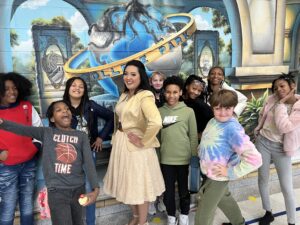
I served for three years at three different schools. Each year, the students developed a different “theme” that defined their class. During my first year at College Park Elementary School in Virginia Beach, the arts were an anchor amidst my students’ chaotic home lives. The arts became a stabilizing force for them, a way for them to express their feelings in a healthy way.

The following year at Norfolk’s Southside STEM Academy at Campostella, the arts became a tool for students’ personal growth. It challenged them to go outside their comfort zones and discover they were capable of more than they thought.

During this past spring at Norfolk’s Lake Taylor School, the arts served as a tool for building community. Each student had a distinct personality, and the act of exploring creativity was the thread that knitted this class closer together.
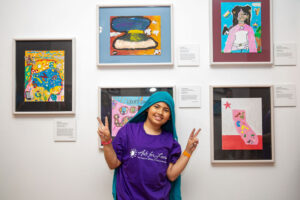 During all three years, I witnessed my students seeing their art displayed in the Chrysler Museum—and those moments were truly life-changing. This year, I said to a student’s mom, “I can only imagine how you must feel knowing that your son is an exhibited artist.” Overcome with joy, she embraced me.
During all three years, I witnessed my students seeing their art displayed in the Chrysler Museum—and those moments were truly life-changing. This year, I said to a student’s mom, “I can only imagine how you must feel knowing that your son is an exhibited artist.” Overcome with joy, she embraced me.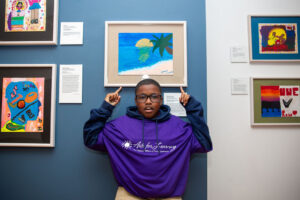
Every student walked out of the Chrysler Museum a changed person, as they realized, “If I just did that, I can do anything.” I felt myself change as well. Each year, I asked myself, “Did that really just happen? Did I really get to witness all these transformations?” The parents of my students told me, “You didn’t just witness it; you were a part of it.” I’m floored every time I hear that. I credit my students who worked so hard, and I thank them for allowing me to be part of their journeys.
As if Arts for Learning didn’t provide me with enough opportunities, they also invited me to participate in the RAISE residency. RAISE stands for Responsive Arts in School Education. For two years, I trained with other Young Audiences’ Teaching Artists over Zoom to learn how to integrate the arts into school curriculum, as well as how to enter classrooms with a trauma-informed, healing-centered approach. This involves supporting students as they discover who they are, honoring their agency and fostering a sense of community and belonging. During the winter and spring, I served as the Resident Teaching Artist on Tuesdays and Thursdays in Ms. Nancy Eason’s second-grade class at Armstrong School for the Arts in Hampton.
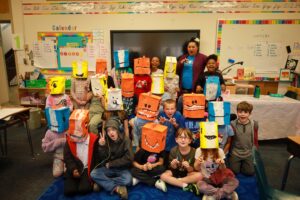 Ms. Eason and I collaborated on curriculum focused on literacy, using the art form of theater to engage students. Lessons featured story sequencing and story recall, with students to create a show based on a book they selected. The class voted for We Don’t Eat Our Classmates by Ryan T. Higgins, a story about a T-Rex named Penelope who learns the dos and don’ts of making friends at school. I then adapted the book into a short play. Over the course of the residency, Ms. Eason noticed that her students who had difficulties with reading at the beginning of the school year gained newfound confidence from their improved skills. In fact, one of these students auditioned for Penelope the T-Rex and got the role!
Ms. Eason and I collaborated on curriculum focused on literacy, using the art form of theater to engage students. Lessons featured story sequencing and story recall, with students to create a show based on a book they selected. The class voted for We Don’t Eat Our Classmates by Ryan T. Higgins, a story about a T-Rex named Penelope who learns the dos and don’ts of making friends at school. I then adapted the book into a short play. Over the course of the residency, Ms. Eason noticed that her students who had difficulties with reading at the beginning of the school year gained newfound confidence from their improved skills. In fact, one of these students auditioned for Penelope the T-Rex and got the role!
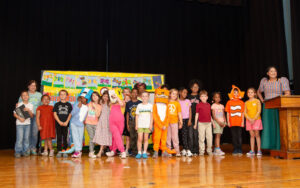
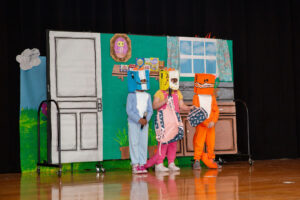 Ms. Eason told me she was amazed that some of her shyer students came out of their shells to perform willingly and with enthusiasm. For the students who didn’t feel comfortable on stage, we ensured they still felt part of the community as members of the stage crew, moving set pieces whenever the scenery needed to change. Another student created music for the slow-motion sequence in the play. All students had a huge hand in designing and decorating the set pieces. (The only exception—for obvious reasons—was Ms. Eason using a jigsaw to carve a giant “fishbowl” out of foam.) The rest of the show was entirely their work, including the costumes. One student hand-sewed the dinosaur tails herself.
Ms. Eason told me she was amazed that some of her shyer students came out of their shells to perform willingly and with enthusiasm. For the students who didn’t feel comfortable on stage, we ensured they still felt part of the community as members of the stage crew, moving set pieces whenever the scenery needed to change. Another student created music for the slow-motion sequence in the play. All students had a huge hand in designing and decorating the set pieces. (The only exception—for obvious reasons—was Ms. Eason using a jigsaw to carve a giant “fishbowl” out of foam.) The rest of the show was entirely their work, including the costumes. One student hand-sewed the dinosaur tails herself.
It was wonderful to see that everything I had learned via Zoom years prior was coming to fruition, as students discovered new aspects of themselves while putting together a show. We honored each kid’s agency—they chose which story we’d turn into a play, they chose which parts to audition for, they chose whether to audition at all, and they chose how to contribute if they didn’t audition. Ultimately, it was remarkable how each student’s individual skills created a sense of community in the class. Everyone was doing their part to contribute to something bigger than themselves: our cast, our crew, our creative team—our show. Due to the kids’ hard work, the show was a huge success!
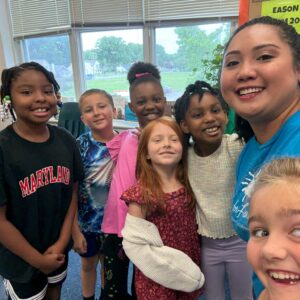 In a full-circle moment for a residency focused on literacy, Ms. Eason’s class invited me back in June for their Author’s Tea. Each student put their own spin on a classic fairytale, such as the Three Little Pigs or Goldilocks, and then created their own books. Once again, students made their books by hand—the storyline, the illustrations, everything. The only thing Ms. Eason did was bind the books. It was the end of the school year, and I could see that students had gone above and beyond in developing their skills of story recall and story sequencing. I felt so proud of them and so happy I could celebrate their accomplishments with them.
In a full-circle moment for a residency focused on literacy, Ms. Eason’s class invited me back in June for their Author’s Tea. Each student put their own spin on a classic fairytale, such as the Three Little Pigs or Goldilocks, and then created their own books. Once again, students made their books by hand—the storyline, the illustrations, everything. The only thing Ms. Eason did was bind the books. It was the end of the school year, and I could see that students had gone above and beyond in developing their skills of story recall and story sequencing. I felt so proud of them and so happy I could celebrate their accomplishments with them.
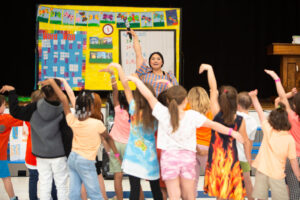 Whether we met once through a workshop or collaborated over a more extended period through a residency, I hope my students know how grateful I am to have shared that time with them. I hope they know how much they’ve changed me. I’m different from the person I was before Arts for Learning discovered me years ago. Back then, freshly post-pandemic, the present and future looked bleak. I felt trapped and stuck, questioning my purpose. Through my students’ eyes, I see hope and optimism. They’ve reminded me that amazing things can and do happen. They’ve shown me that my purpose is right here, with them.
Whether we met once through a workshop or collaborated over a more extended period through a residency, I hope my students know how grateful I am to have shared that time with them. I hope they know how much they’ve changed me. I’m different from the person I was before Arts for Learning discovered me years ago. Back then, freshly post-pandemic, the present and future looked bleak. I felt trapped and stuck, questioning my purpose. Through my students’ eyes, I see hope and optimism. They’ve reminded me that amazing things can and do happen. They’ve shown me that my purpose is right here, with them.
In addition to her work as a Teaching Artist, Jackie now works for A4L-VA as a Program Assistant. She is also one of our Coastal Virginia Wolf Trap teaching artists. We appreciate her contributions to our organization every day.


